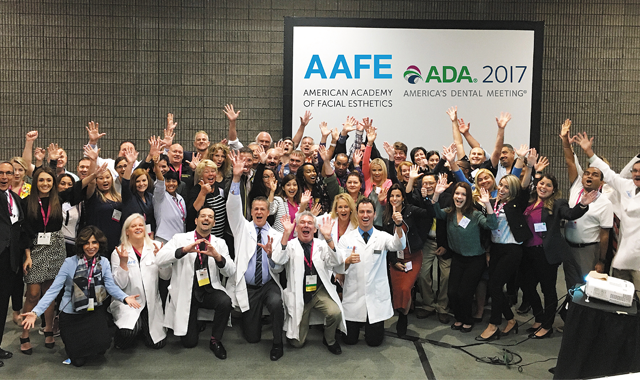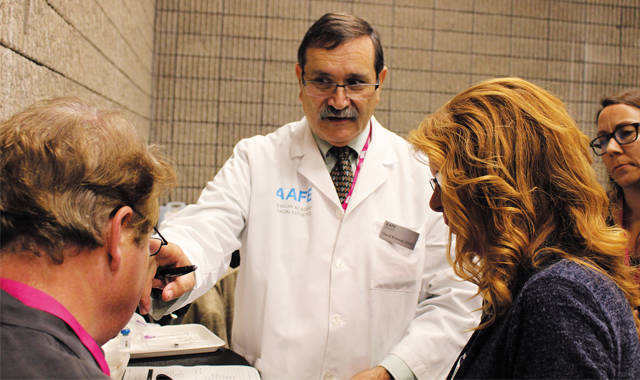What technology is right for your practice?
Integrating new technology in your practice doesn’t have to be painful.

It’s time to take a fresh look at dental technology. There are a lot of technology choices available to dentists today. Whether you’re in practice for the next 30 years or retiring within the next five years, you’re going to have to make a technology choice.
The right choice of technology can rapidly improve your practice’s bottom line, provide better treatment and patient outcomes, and grow your practice. The wrong choice of technology can complicate clinical care, provide for poor treatment outcomes, waste your time and money, and bankrupt your practice.
Related article: The top 10 developments in dental technology in 2017
I want to make one point very clear - technology is not just a piece of capital equipment that you invest in. Every dental material and technique that you choose for your practice is also a result of new technology. Rapid dental innovation drives technology, which constantly improves patient care through new techniques and procedures that are able to be accomplished for better treatment outcomes than ever before.
When we look at new technology choices for our practices, I break it down into two categories of dental technology choices.
Integrative technology
Integrative technology is any procedure, material or capital equipment that can be quickly and efficiently integrated into the present office structure and schedule. In other words, if I adopt something new for my practice, I don’t have to change the physical structure of my office or the personnel to adapt to the technology. There are two subsets of integrative technology:
Capital equipment integrative technology includes dental lasers - like the Solea® Dental Laser from Convergent Dental - scalpels and high-speed handpieces. Most certainly, training for you and your team on using the actual technology is essential, but after that it fits into your present physical structure quickly and easily without any other disruptions.
Skills-based technology and procedures include BOTOX®, dermal fillers, solid filler PDO threadlifts, dental sleep medicine and trigger point therapy. Once learned, dental professionals will have the skills for the rest of their careers (Figs. 1-2). Pharmaceutical agents like BOTOX, dermal fillers and PDO threadlifts for esthetic and therapeutic uses in the oral and maxillofacial areas cause no disruption to the office team or physical structure, provide dental practices with more services that patients actually want and get elsewhere, and provide patients with better treatment outcomes than ever before. There are no constant hardware or software upgrades necessary because the skills are in your hands forever.
Fig. 1 AAFE Live patient BOTOX training course at ADA 2017 Dental Meeting

Fig. 2 AAFE faculty member, Dr. David Kimmel, teaches proper BOTOX delivery to dentists

Non-integrative technology
A good example of non-integrative technology is in-office CAD/CAM. In addition to buying and learning this technology, your office will significantly need to change the way it schedules patients, the physical structure of the office may need to adapt to the technology and intensive training is necessary to make this technology successful. For clinicians who commit to non-integrative technology, the results can be very rewarding.
ROI
The other thing to look at is ROI on any technology choice. Most certainly, skills-based technology services like BOTOX, dermal fillers and PDO threadlifts are the easiest to integrate and by far have the highest ROI simply because there is no large capital investment up front, no monthly lease payment, and no need for constant software and hardware upgrades.
Bottom line
The determining factor of any technology choice is you, the clinician. All technology, materials and procedures can be good for your practice.
Related article: How to locate the pain points in your practice
I often see examples of dental professionals who have invested hundreds of thousands of dollars in capital-intensive technology that sit in the corner of a treatment room and serve as expensive coat hangers. It is so important for you to do your due diligence and invest the time and effort to get trained and then start treating patients with the technology of your choice as quickly as possible.
Integration is very easy with skills-based technology choices because you can literally start the Monday morning after you have been trained. There is nothing to wait for - you have the skill in your hands!
Get your start like most of the thousands of American Academy of Facial Esthetics (AAFE) members by adding high ROI skill-based procedures like BOTOX and dermal fillers to your practice. This will dramatically increase your production and help fund the investment necessary for the capital investment technology of your dreams. Time for you to get trained today!